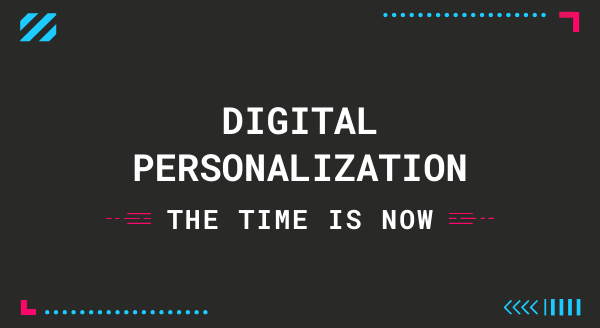
While we’ve been talking about the importance of web content personalization for many years, some of you might wonder why we continue to stress it right now. After all, the COVID-19 pandemic has colleges and universities preoccupied. Most higher ed institutions moved their classes to an online format, and Marketing and Communications had to create a constant stream of content in order to keep everyone informed. Priorities have certainly changed, and we also can’t ignore worries about budgets. So why think about personalization now?
Let’s be honest. We’re all feeling a little disconnected from the outside world at the moment. The same goes for current and prospective students, your faculty and staff, and other segments of your audience. Now more than ever, you will want to make sure that your website visitors feel that you genuinely value them as individuals by showing them content that is tailored to their needs. If you have a COVID-19 related section on your page, for instance, you can provide a better, more caring experience through personalization. For example, if someone has indicated through the use of a search term or form submission that they are experiencing anxiety or stress, you can show them links to appropriate resources.
People are currently spending more time on apps and on the web than ever before. The increased consumption of highly personalized content on social media, streaming services, and other apps results in higher expectations when it comes to user experience. Students simply won’t give higher ed websites a pass. Even before COVID-19, prospective students spent the majority of their decision making process on their own when researching colleges. As the most digitally savvy cohort in history, they expect a top notch experience, meaning that they see content that is relevant to their individual needs and to where they are in their journey.
Real estate on high visibility pages, such as your homepage or landing pages, has always been precious. Now that COVID-19 coverage is (rightfully) taking up prime spots on your site, you want to be even more selective about what to do with the content that you feature. By implementing a personalization strategy, you are able to show each visitor what is most important to them rather than making difficult decisions to sacrifice certain pieces of content.
While the overall real estate of a website might be unlimited, we have to keep in mind that our attention spans are more limited than ever. We’re stressed, we might be stuck at home with a lot of distractions, and we’re being bombarded with information. You want to make sure that your website visitors always see the content that’s the most relevant to them, and always get prompted with the next step that makes sense to them. Here’s a simple example: A lot of COVID-19 sections on higher ed websites contain extensive FAQs, with separate accordions for each section (students, faculty/staff, general). Using personalization, you can arrange the order of those sections depending on who your visitor is.
While higher education websites generally strive to fulfill the needs of multiple segments, including current students, faculty, alumni, the media, and the community, top level pages such as the homepage tend to cater primarily to prospective students. However, in light of the pandemic, higher ed web teams are just as concerned about retaining students as they are recruiting new ones. Through personalization, you can show targeted content snippets without having to rework your website. You can simply swap out calls to action, inline content, or navigation items based on what you know about the visitor.
Personalization strategies can and should become a priority for higher education web teams, as they are adjusting to the “new reality”. Even small changes, such as customized CTAs or rearranging components on a particular page can improve the user experience. It’s the right thing to do, now more than ever.
Interested in getting started with digital personalization? Take a look at Clive, our engagement and real-time personalization tool.
Last Updated: May 12, 2020 11:00 AM